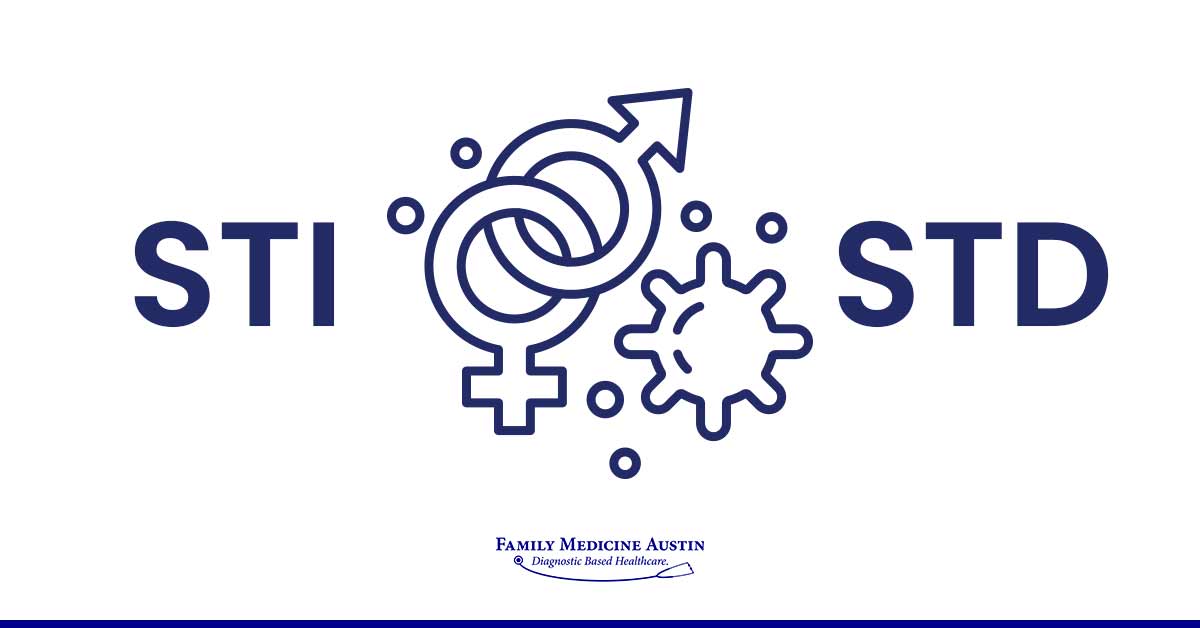
According to estimates, one in every two Americans will have an STI by the age of 25. There were 2,295,739 diagnoses of STDs that were recorded in 2017. What differentiates STD from STI, given these disparate numbers? Given the prevalence of STIs and STDs, knowledge is crucial for maintaining your sexual health. Being aware of the differences between various sexual disorders contributes to some of this knowledge.
Viruses, parasites, and bacterial infections are among these conditions. Some of them are treatable with antibiotics and antiviral drugs, while others are still incurable and may need continuous care. The good news is that vaccinations can reduce the chance of developing some STDs and that the majority of STDs are avoidable. However, STDs pose significant health concerns, particularly when they go untreated.
Sexually transmitted infections, or STIs, Sexually transmitted illnesses, or STDs,
The terms are the first way that STDs and STIs vary from one another. While STI stands for sexually transmitted infection, STD stands for sexually transmitted disease. Fundamental differences exist between a disease and an infection. While not all diseases begin with infections, many do. Sexually transmitted illnesses develop from sexually transmitted infections. Sexually transmitted bacteria or viruses enter the body and start to grow, which then causes infection.
The infection may develop into a disease if the sexually transmitted viruses or bacteria have penetrated the body. When this outside influence formally interferes with the body’s regular processes and functioning, disease results.
Although sexually transmitted illnesses don’t always begin as infections, they often do. When microorganisms like pathogens, viruses, or parasites penetrate your body and begin to proliferate, infections develop. The nature of pathogens will determine how they enter your body.
Some are spread by direct skin-to-skin contact with an infected individual, while others are spread through the exchange of body fluids including blood, vaginal secretions, or semen. When these microorganisms destroy your cells and symptoms start to manifest, infection turns into illness.
Testing is crucial since symptoms may take days, weeks, or even months to become evident. Having said that, sexually active people should be aware of the indicators to look out for. Depending on the sort of sexual behavior you’ve engaged in, various STDs have distinct symptoms and might affect different sections of your body. In fact, this applies to all forms of sex, including oral, vaginal, and anal intercourse, dry humping, hand jobs, and hand sex.
All sexually active individuals should be screened annually, according to the Centers for Disease Control and Prevention (CDC). However, a good general guideline is to be tested if you:
How they manifest is another significant distinction between STDs and STIs. You can have certain symptoms since an STD is the advanced stage of a STI. But many STI carriers don’t exhibit any symptoms of infection.
The one and only way to find out whether you have an STD or STI is to be tested. Unfortunately, a lot of people still disregard being checked frequently after sexual activity. Stigma is often to blame for this. By adopting less stigmatising terminology, some medical experts aim to encourage more individuals to be checked. It’s crucial that individuals feel secure and safe, undergo testing, and stop the disease from spreading. Unfortunately, a lot of illnesses spread because the carrier is unaware of their condition.
There are various methods people can employ to keep themselves STI and STD free. Some of these selections might not suit a person’s interests and way of life. People may, however, employ a number of strategies to lower their risk of contracting STIs and STDs. It is important that people select a technique—or a mix of techniques—that best meets their needs.
See Also: What Doctor to See for Sexually Transmitted Diseases (STDs): Guidelines to Raise Awareness
To understand more about the differences between STIs and STDs or to address worries about STI exposure, speak with a medical expert. When necessary, trained specialists can provide accurate information and conduct STI testing. These services can be found at physician offices, hospitals, nonprofit medical organizations, or urgent care centers. Additionally, several health services may provide discreet, nonjudgmental healthcare through public health centers where students can get tested for STDs, book appointments with nurses at a discounted rate, have access to free condoms and other products for safe sex, and receive detailed information about particular STIs, their symptoms, and treatments.
The state of one’s sexual health is crucial to one’s life. It may have an effect on someone’s psychological, physical, and mental health. That’s why it’s important that everyone has access to the tools and knowledge they really have to maintain their sexual health.